| | | Mathison Museum of Natural History |  |
|
+15Caracal widukind lucky luke Megaptera rogerpgvg Jill sunny pipsxlch Saarlooswolfhound landrover Kikimalou Taos Duck-Anch-Amun Shanti Saien 19 posters | |
| Author | Message |
|---|
bmathison1972
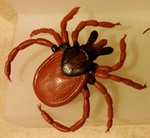
Country/State : Salt Lake City, UT
Age : 52
Joined : 2010-04-12
Posts : 6337
 |  Subject: Re: Mathison Museum of Natural History Subject: Re: Mathison Museum of Natural History  Wed May 24, 2023 4:40 am Wed May 24, 2023 4:40 am | |
| Species: Libinia mexicana Rathbun, 1892 Common name(s): Mexican spider crab; cangrejo araña de MexicanaAbout the Figure: Manufacturer: Play Visions Series: Habitat Earth - Crabs Year of Production: 1996 Size/Scale: Legspan 7.0 cm. Carapace length approximately 1.5 cm for a scale of 1:3.3-1:4.3 Frequency of species in toy/figure form (at time of posting): Unique Miscellaneous Notes: This figure is stamped only 'spider crab' and the species identification is my own, based on that all of the figures in the set (except one) represent species endemic to southern California and northern Mexico (including the Sea of Cortés). The legs are a bit long for L. mexicana, but the shape of the carapace and color are good for this species. About the Animal: Geographic distribution: Pacific Coast of Mexico, from the Sea of Cortés south to San Ignacio Bay, Sinaloa. Habitat: Rocky intertidal and shallow subtidal environments, tidal pools Diet: Algae, detritus, marine invertebrates IUCN Status (at time of posting): Not Evaluated Miscellaneous Notes: I had difficulty easily accessing information on this species and some of the information above is inferred from other members of the genus Libinia. [You must be registered and logged in to see this image.] |
|   | | widukind
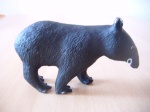
Country/State : Germany
Age : 48
Joined : 2010-12-30
Posts : 44628
 |  Subject: Re: Mathison Museum of Natural History Subject: Re: Mathison Museum of Natural History  Wed May 24, 2023 11:30 am Wed May 24, 2023 11:30 am | |
| |
|   | | bmathison1972

Country/State : Salt Lake City, UT
Age : 52
Joined : 2010-04-12
Posts : 6337
 |  Subject: Re: Mathison Museum of Natural History Subject: Re: Mathison Museum of Natural History  Thu May 25, 2023 4:40 am Thu May 25, 2023 4:40 am | |
| Species: Lusepiola birostrata (Sasaki, 1918) Common name(s): butterfly bobtail squid About the Figure: Manufacturer: Kaiyodo Series: Capsule Q Museum - Squid Strap Collection 1 Year of Production: 2013 Size/Scale: Total figure length approximately 5.5 cm. Mantle length approximately 2.5 cm for a scale of 1.1:1 (slightly larger than 1:1) Frequency of species in toy/figure form (at time of posting): Unique Miscellaneous Notes: This figure was marketed as Sepiola birostrata before the description of Lusepiola in 2020 (see below). Figures in this set were sold as 'straps' but the strap can be easily removed leaving an imperceivable hole. About the Animal: Geographic distribution: West Pacific Habitat: Benthic, at depths of 100-200 meters Diet: Primarily small crustaceans, occasionally other benthic invertebrates and small fish IUCN Status (at time of posting): Data Deficient Miscellaneous Notes: In 2020, Sepiola was split into four genera based on morphologic features of their sexual structures. Lusepiola, Eumandyap, and Boletzkyola all possess a closed bursa copularix, a clear indication of their affinity. Lusepiola differs from the other three genera in the structure of its hectocotylus copulatory apparatus. It differs from Sepiola proper primarily because of the different type of bursa copulatrix. These morphologic findings were later supported by independent molecular analyses. [You must be registered and logged in to see this image.] |
|   | | widukind

Country/State : Germany
Age : 48
Joined : 2010-12-30
Posts : 44628
 |  Subject: Re: Mathison Museum of Natural History Subject: Re: Mathison Museum of Natural History  Thu May 25, 2023 9:49 am Thu May 25, 2023 9:49 am | |
| |
|   | | bmathison1972

Country/State : Salt Lake City, UT
Age : 52
Joined : 2010-04-12
Posts : 6337
 |  Subject: Re: Mathison Museum of Natural History Subject: Re: Mathison Museum of Natural History  Fri May 26, 2023 4:38 am Fri May 26, 2023 4:38 am | |
| Species: Anarhichas orientalis Pallas, 1814 Common name(s): Bering wolffish About the Figure: Manufacturer: Kaiyodo Series: Sendai Aquarium Collection Year of Production: 2017 (see below) Size/Scale: Base 4.1 cm wide. Body length impossible to measure but using head length as a metric (n=1.5 cm), scale comes to approximately 1:15 (see below). Frequency of species in toy/figure form (at time of posting): Rare Miscellaneous Notes: I believe this figure came out in 2017 and then was re-released in 2019 with an updated base that includes the Latin and Japanese names. The 2019 re-release was part of a set that originally came out in 2015 (that didn't contain this wolffish, however). Previously in 2004, Kaiyodo produced this species for an Enoshima Aquarium collection; that figure also has partial fish coming out of the nest but includes both sexes (see below). The scale above is calculated based on the head of the fish being on average 20% of the total body length (n=112 cm). About the Animal: Geographic distribution: North Pacific, from Japan (Hokkaido) to the Bering Sea and Arctic Canada Habitat: Demersal, on rocky, gravel, and sandy substrates at depths of 0-100 meters (usually 10-70 meters) Diet: Crustaceans and shelled mollusks IUCN Status (at time of posting): Not Evaluated Miscellaneous Notes: Anarhichas orientalis has an atypical life cycle for a fish. During the spawning season, the wolffish forms bonded pairs and sometimes even mates for life. Unlike many species of fish, in which the females release unfertilized eggs into the water, the wolffish fertilizes the eggs internally. Eggs are very large in relation to the fish themselves. Both sexes play a pivotal role in raising the young, but the male has the main task of protecting the larvae in the nest for the next few months before they become independent. Independent larvae remain in the pelagic zone until they mature further. [You must be registered and logged in to see this image.] |
|   | | widukind

Country/State : Germany
Age : 48
Joined : 2010-12-30
Posts : 44628
 |  Subject: Re: Mathison Museum of Natural History Subject: Re: Mathison Museum of Natural History  Fri May 26, 2023 10:48 am Fri May 26, 2023 10:48 am | |
| Another interesting fish figure |
|   | | bmathison1972

Country/State : Salt Lake City, UT
Age : 52
Joined : 2010-04-12
Posts : 6337
 |  Subject: Re: Mathison Museum of Natural History Subject: Re: Mathison Museum of Natural History  Sat May 27, 2023 5:13 am Sat May 27, 2023 5:13 am | |
| Species: Cebus imitator (Thomas, 1903) Common name(s): Panamanian white-faced capuchin; Central American white-faced capuchin About the Figure: Manufacturer: National Entertainment Collectibles Association Series: Ace Ventura 8" Pet Detective Year of Production: 2019 Size/Scale: Body length (excluding tail) approximately 5.5 cm for a scale of 1:6-1:8.2 Frequency of species in toy/figure form (at time of posting): Rare (see below) Miscellaneous Notes: This figure was sold as an accessory to an Ace Ventura action figure. It could represent either C. imitator or the Colombian white-faced capuchin ( C. capucinus) (see below); I chose mine to represent the former since it's the more familiar and better studied of the two species. The base of the tail is articulated. The frequency of this species as a toy/figure depends on which species one assigns to white-faced capuchin figures. About the Animal: Geographic distribution: Central America, from Honduras to central Panama Habitat: Primary or advanced secondary tropical evergreen and dry deciduous forest, montane forest, mangroves Diet: General omnivore, including fruits, nuts, invertebrates, rodents, reptiles, small birds IUCN Status (at time of posting): Vulnerable Miscellaneous Notes: For a long time, C. imitator was considered to be a subspecies of C. capucinus. A 2012 phylogenetic analysis looking at mitochondrial DNA suggested that diversification of Cebus occured approximately 2 MYA across the Andes and Amazon. The various species from various regions include: Amazon ( C. yuracus, C. unicolor, C. kaapori), Guiana Shield ( C. albifrons, C. olivaceus, C. castaneus), Northern Andes ( C. versicolor, C. cesarae), coastal Venezuela ( C. brunneus), Lake Maracaibo ( C. adustus), southern Panama to Ecuador and Colombia ( C. capucinus), and Central America ( C. imitator). Some taxa from the southwestern Amazon ( C. yuracus, C. cuscinus, C. unicolor) remain poorly defined and their status is currently unresolved. [You must be registered and logged in to see this image.] |
|   | | bmathison1972

Country/State : Salt Lake City, UT
Age : 52
Joined : 2010-04-12
Posts : 6337
 |  Subject: Re: Mathison Museum of Natural History Subject: Re: Mathison Museum of Natural History  Sun May 28, 2023 5:28 am Sun May 28, 2023 5:28 am | |
| Species: † Siderops kehli Warren & Hutchinson, 1983 About the Figure: Manufacturer: Cadbury Series: Yowies Lost Kingdoms Series A Year of Production: 2000 Size/Scale: Figure length 7.3 cm. Using width of head as a metric (n=2 cm), scale comes to approximately 1:32.5 Frequency of species in toy/figure form (at time of posting): Unique Miscellaneous Notes: Being one of the original Australian Yowies, some assembly is required. About the Animal: Geographic distribution: Early Jurassic (Toarcian) of present-day Australia Habitat: Freshwater lakes Diet: Presumably predaceous on other animals, such as fish and other amphibians IUCN Status (at time of posting): N/A [prehistoric] Miscellaneous Notes: Siderops kehli is believed to have had a similar lifestyle to crocodiles today, being an ambush predator of vertebrate animals in and along the margins of freshwater lakes and ponds. [You must be registered and logged in to see this image.] |
|   | | widukind

Country/State : Germany
Age : 48
Joined : 2010-12-30
Posts : 44628
 |  Subject: Re: Mathison Museum of Natural History Subject: Re: Mathison Museum of Natural History  Sun May 28, 2023 7:43 am Sun May 28, 2023 7:43 am | |
| The capuchon is very nice and interesting. I think i will hunt that monkey figure |
|   | | bmathison1972

Country/State : Salt Lake City, UT
Age : 52
Joined : 2010-04-12
Posts : 6337
 |  Subject: Re: Mathison Museum of Natural History Subject: Re: Mathison Museum of Natural History  Mon May 29, 2023 5:37 am Mon May 29, 2023 5:37 am | |
| Species: Mictyris brevidactylus Stimpson, 1858 Common name(s): long-armed soldier crab About the Figure: Manufacturer: Epoch Series: Earth Life Journey Crabs and Shrimp Year of Production: unknown Size/Scale: Base 6.8 cm wide. Carapace length approximately 2.0 cm for a scale of 1.5:1-1.1:1 (slightly over 1:2 for a maximum-sized specimen) Frequency of species in toy/figure form (at time of posting): Rare Miscellaneous Notes: There have been multiple releases (at least three, possibly four) of Epoch's Earth Life Journey Crabs and Shrimp collections, each with a slightly different species composition and often consisting of re-releases with different paint jobs. A set typically has 6 or 7 figures in it. In all there are 10 species (9 crustaceans and 1 xiphosuran). I have collected mine individually over the years so I am not entirely sure which of mine came from which release. Today's crab doesn't require assembly, but its base comes in two pieces. This species has also been produced by Wing Mau and Kaiyodo. About the Animal: Geographic distribution: West Pacific (Japan, China, Taiwan, Singapore, Indonesia) Habitat: Estuaries and tidal mud flats, usually in areas devoid of vegetation Diet: Detritus, diatoms, mollusk eggs, small invertebrates IUCN Status (at time of posting): Not Evaluated Miscellaneous Notes: Mictyris brevidactylus typically live at or below the point of low tide. When the tide is high and submerged, the crabs dig into the sand in a corkscrew-like fashion, forming an air pocket. The depth of the pocket is based on how far into the substrate the water goes. When the tide is low enough the surface of the sand is exposed, the crabs come to the surface, or just below the surface, to feed. Those that feed below the surface do so in specialized 'tunnels', which are essentially chambers with a vaulted roof just below the surface of the sand. Crabs only form this kind of feeding structure when the water table is well below the surface of the sand at low tide. Those crabs that come to the surface to feed usually do so in large droves. [You must be registered and logged in to see this image.] |
|   | | widukind

Country/State : Germany
Age : 48
Joined : 2010-12-30
Posts : 44628
 |  Subject: Re: Mathison Museum of Natural History Subject: Re: Mathison Museum of Natural History  Mon May 29, 2023 5:49 am Mon May 29, 2023 5:49 am | |
| |
|   | | bmathison1972

Country/State : Salt Lake City, UT
Age : 52
Joined : 2010-04-12
Posts : 6337
 |  Subject: Re: Mathison Museum of Natural History Subject: Re: Mathison Museum of Natural History  Tue May 30, 2023 6:01 am Tue May 30, 2023 6:01 am | |
| Species: Vespa mandarinia Smith, 1852 Common name(s): Asian giant hornet About the Figure: Manufacturer: Subarudo Series: Insect Forest Hornet Attack Year of Production: 2007 Size/Scale: Body length approximately 7.7 cm for an average scale of 2:1 for a worker wasp Frequency of species in toy/figure form (at time of posting): Uncommon Miscellaneous Notes: This is the fourth time we have seen V. mandarinia in the Museum. Assembly is required (as indicated by the fact one of the legs is missing on mine). This sculpt may have also been used by Takara Tomy A.R.T.S. as it was produced in era when they were collaborating. About the Animal: Geographic distribution: East and Southeast Asia, Japan; recently introduced to the Pacific Northwest of North America, but it is unknown if populations are established (see below) Habitat: Forests, woodlands Diet: Larvae are feed insects provided by adults; adults are predaceous on insects, but will also eat tree sap, overripe fruit, and Vespa amino acid mixture produced by the larvae. IUCN Status (at time of posting): Not Evaluated Miscellaneous Notes: The first confirmed reports of V. mandarinia in North America were in August 2019 in Vancouver, British Columbia, Canada and neighboring Blaine, Washington, USA (yes, really, I share a namesake with that town). Wasps and nests continued to be found in the general area through September 2021. Mitochondrial DNA studies showed that the populations in Canada and Washington were from different maternal populations, with the Canadian populations probably having originated from Japan and the Washington populations from the Korean Peninsula. This suggested two separate introductions with establishment within 100 km of one another in a span of a few months! In June 2021, a wasp discovered in Marysville, Washington was shown to have morphologic and genetic differences from the previous two populations suggesting a third potential introduction (although it is possible this single wasp was a hitchhiker and may not have come from an established population). As of December 2022, there have been no confirmed sightings in the Pacific Northwest and it is believed eradication efforts were successful. [You must be registered and logged in to see this image.] |
|   | | widukind

Country/State : Germany
Age : 48
Joined : 2010-12-30
Posts : 44628
 |  Subject: Re: Mathison Museum of Natural History Subject: Re: Mathison Museum of Natural History  Tue May 30, 2023 10:13 am Tue May 30, 2023 10:13 am | |
| |
|   | | bmathison1972

Country/State : Salt Lake City, UT
Age : 52
Joined : 2010-04-12
Posts : 6337
 |  Subject: Re: Mathison Museum of Natural History Subject: Re: Mathison Museum of Natural History  Wed May 31, 2023 4:43 am Wed May 31, 2023 4:43 am | |
| Species: Hexarthrius mandibularis Deyrolle, 1881 About the Figure: Manufacturer: Bandai Series: Diversity of Life on Earth - Stag Beetles Vol. 2 Year of Production: 2021 Size/Scale: Body length (including mandibles) approximately 13.5 cm for a scale of 1.2:1 (slightly larger than 1:1 for a maximum-sized specimen). Wingspan, as displayed here, approximately 18.0 cm Frequency of species in toy/figure form (at time of posting): Uncommon Miscellaneous Notes: This is the second time we've seen H. mandibularis in the Museum. This figure is large, requires assembly, is articulated, and may be expensive. It is a model for serious collectors and not a toy to be played with. The beetle can be displayed on a base (not shown here) as if in mid-flight. It can also be displayed in a neutral position by removing the hind wings. About the Animal: Geographic distribution: Indonesia Habitat: Rainforests Diet: Larvae feed on rotting hardwoods; adults are attracted to tree sap. IUCN Status (at time of posting): N/A Miscellaneous Notes: The natural life cycle of H. mandibularis is unknown. In captivity, development takes 9-12 months, with most of that time spent as a larva. [You must be registered and logged in to see this image.] |
|   | | widukind

Country/State : Germany
Age : 48
Joined : 2010-12-30
Posts : 44628
 |  Subject: Re: Mathison Museum of Natural History Subject: Re: Mathison Museum of Natural History  Wed May 31, 2023 10:04 am Wed May 31, 2023 10:04 am | |
| |
|   | | Caracal
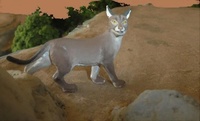
Country/State : France
Age : 65
Joined : 2018-10-24
Posts : 7004
 | |   | | landrover
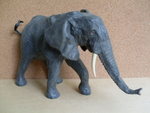
Country/State : colombia
Age : 66
Joined : 2010-11-04
Posts : 5781
 | |   | | bmathison1972

Country/State : Salt Lake City, UT
Age : 52
Joined : 2010-04-12
Posts : 6337
 |  Subject: Re: Mathison Museum of Natural History Subject: Re: Mathison Museum of Natural History  Thu Jun 01, 2023 4:28 am Thu Jun 01, 2023 4:28 am | |
| Species: Opheodrys vernalis (Harlan, 1827) Common name(s): smooth green snake About the Figure: Manufacturer: Wing Mau Series: Snakes Year of Production: unknown Size/Scale: Body length approximately 26.0 cm for a scale of 1:1.4-1:2.5 Frequency of species in toy/figure form (at time of posting): Very rare (possibly unique as a sculpt) Miscellaneous Notes: This figure was also used by Club Earth for their Snakes to Go collection. The bottom is stamped 'western smooth green snake' implying it is meant to represent the subspecies O. v. blanchardi. About the Animal: Geographic distribution: Somewhat patchy distribution in southern Canada and northeastern and north-central United States Habitat: Marshes, meadows, pastures, open woodlands; often in open areas and near bodies of water including lakes and streams Diet: Primarily insects and spiders, but occasionally also worms, slugs, and small amphibians IUCN Status (at time of posting): Least Concern Miscellaneous Notes: Despite being classified as Least Concern by the IUCN, O. vernalis is suffering from population decline. Several factors are responsible for this, including poaching for the pet trade, pesticide use, hunting by feral and outdoor cats, and habitat destruction. Populations of the snake are usually isolated and small in range, so habitat destruction, such as logging, road building, cattle grazing, off-road vehicle activity, and the draining of wetlands, can be particularly harmful. [You must be registered and logged in to see this image.] |
|   | | widukind

Country/State : Germany
Age : 48
Joined : 2010-12-30
Posts : 44628
 |  Subject: Re: Mathison Museum of Natural History Subject: Re: Mathison Museum of Natural History  Thu Jun 01, 2023 9:48 am Thu Jun 01, 2023 9:48 am | |
| |
|   | | Caracal

Country/State : France
Age : 65
Joined : 2018-10-24
Posts : 7004
 | |   | | bmathison1972

Country/State : Salt Lake City, UT
Age : 52
Joined : 2010-04-12
Posts : 6337
 |  Subject: Re: Mathison Museum of Natural History Subject: Re: Mathison Museum of Natural History  Fri Jun 02, 2023 4:49 am Fri Jun 02, 2023 4:49 am | |
| Species: Coris aygula Lacépède, 1801 Common name(s): clown coris; clown wrasse; red-blotched wrasse; twinspot wrasse About the Figure: Manufacturer: Play Visions Series: Tropical Fish Year of Production: 1996 Size/Scale: Body length approximately 5.9 cm for a scale of 1:5 (see below) Frequency of species in toy/figure form (at time of posting): Unique Miscellaneous Notes: This figure was modeled after a juvenile. Adult C. aygula can reach a length of approximately 120 cm, but from I can tell, they keep this juvenile color until a length of 30 cm or so. About the Animal: Geographic distribution: Indo-Pacific Habitat: Coral reefs, at depths of 2-30 meters Diet: Primarily hard-bodied invertebrates, including crustaceans, shelled mollusks, sea urchins IUCN Status (at time of posting): Least Concern Miscellaneous Notes: Like other wrasses, C. aygula is a protogynous hermaphrodite. Most members of a population begin life as females and some transform into males later in life. When spawning, C. aygula gathers in loose aggregations where a dominant male oversees several females within a territory. If the dominant male dies, the largest female will usually transform into the resident male and assume his role. [You must be registered and logged in to see this image.] |
|   | | widukind

Country/State : Germany
Age : 48
Joined : 2010-12-30
Posts : 44628
 |  Subject: Re: Mathison Museum of Natural History Subject: Re: Mathison Museum of Natural History  Fri Jun 02, 2023 9:30 am Fri Jun 02, 2023 9:30 am | |
| |
|   | | Caracal

Country/State : France
Age : 65
Joined : 2018-10-24
Posts : 7004
 | |   | | bmathison1972

Country/State : Salt Lake City, UT
Age : 52
Joined : 2010-04-12
Posts : 6337
 |  Subject: Re: Mathison Museum of Natural History Subject: Re: Mathison Museum of Natural History  Sat Jun 03, 2023 5:27 am Sat Jun 03, 2023 5:27 am | |
| Species: † Homo erectus (Dubois, 1893) Common name(s): upright man About the Figure: Manufacturer: Bullyland Series: Evolution of Men Year of Production: 1999 Size/Scale: Height approximately 10.5 cm for a scale of 1:13.9-1:17.6 Frequency of species in toy/figure form (at time of posting): Rare Miscellaneous Notes: The Evolution of Men set included six hominids: Dryopithecus fontani, Australopithecus afarensis, Homo habilis, H. erectus, H. neanderthalensis, and Paleolithic H. sapiens. In 2014, Safari Ltd. released their Evolution of Man collection which consisted of the same species minus the Dryopithecus. I initially had the Safari collection and individually obtained the Dryopithecus, but when the opportunity presented itself to get a complete Bullyland set, I replaced the Safari collection with it. The Safari collection is very good, but it was nice to get a complete Bullyland collection. About the Animal: Geographic distribution: Early to late Pleistocene of Africa, Europe, Middle East, Central and Southeast Asia Habitat: Highly variable, including open woodlands, plains, grasslands; often in areas near reliable sources of water Diet: General omnivore, including a wide variety of animals (including large game), fruits, vegetables, nuts, tubers, seeds IUCN Status (at time of posting): N/A [prehistoric] Miscellaneous Notes: Homo erectus is believed to have evolved from an isolated population of H. habilis approximately 2 MYA, with the last known population living approximately 0.1 MYA. It had one of the widest distributions of species of Homo that predated H. neanderthalensis and H. sapiens, having reached Java in the East and possibly western Europe to the north. Homo erectus did not have a written language, but did show signs of early artistic capabilities and collected natural pigments such as ochre. It is unknown whether or not H. erectus used clothing. Tool use included stone flakes fashioned as axes, picks, knives, and cleavers; H. erectus is credited with initiating the Acheulean stone tool industry. Homo erectus is considered the first hominid to have used fire. [You must be registered and logged in to see this image.] |
|   | | Kikimalou
Admin
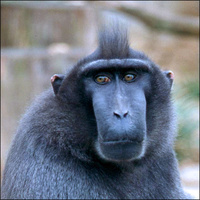
Country/State : Lille, FRANCE
Age : 59
Joined : 2010-04-01
Posts : 20313
 |  Subject: Re: Mathison Museum of Natural History Subject: Re: Mathison Museum of Natural History  Sat Jun 03, 2023 6:30 am Sat Jun 03, 2023 6:30 am | |
| - bmathison1972 wrote:
- Species: Opheodrys vernalis (Harlan, 1827)
Common name(s): smooth green snake
Frequency of species in toy/figure form (at time of posting): Very rare (possibly unique as a sculpt) Ther is also the safari Ltd from the River toob |
|   | | Sponsored content
 |  Subject: Re: Mathison Museum of Natural History Subject: Re: Mathison Museum of Natural History  | |
| |
|   | | | | Mathison Museum of Natural History |  |
|
Similar topics |  |
|
| | Permissions in this forum: | You cannot reply to topics in this forum
| |
| |
| |
